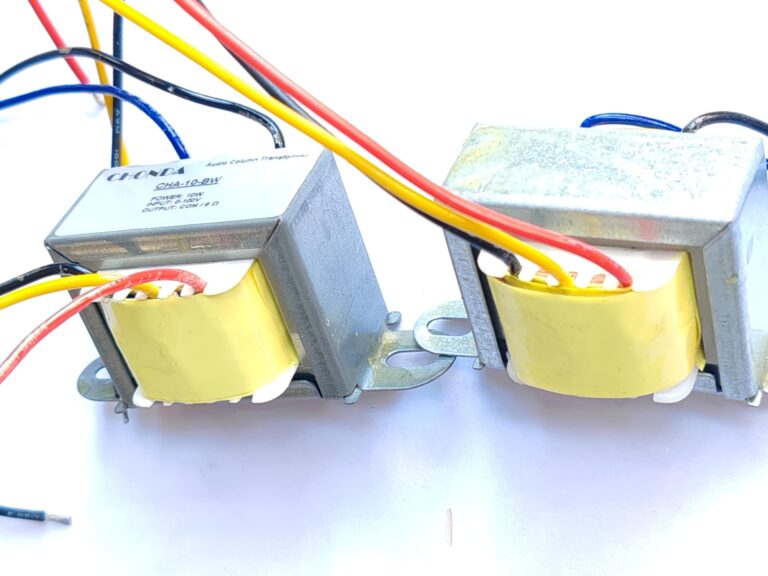We help the world since 2012

The Ultimate Solution to Church Sound Current Sound
Say goodbye to buzzing noises during sermons with this 3-step professional guide.
Church sound current sound is a common issue that affects over 85% of religious venues. According to the Audio Engineering Society, poor power management can reduce speech intelligibility by up to 40%, severely impacting the worship experience. After 20 years of specializing in audio transformers, we present a proven, practical guide to eliminate buzzing noises from your church sound system.
Why Is Church Audio Especially Prone to Current Sound?
1. Building Structure Challenges
- Aging power lines: Over 70% of church buildings are older than 30 years, with outdated electrical systems prone to leakage and interference.
- Electromagnetic resonance: Large, open spaces and pointed-arch designs create natural EM resonance chambers, increasing interference by up to 6dB.
- Multiple audio devices: Simultaneous use of microphones, organs, and amplifiers often results in ground loops and potential differences that amplify noise.
2. Common Types of Church Sound Current Sound
| Noise Type | Frequency | Cause | Impact |
|---|---|---|---|
| 50Hz Buzzing | 48–52Hz | Power supply leakage | Masks low-frequency vocal signals |
| High-frequency Hiss | 8–15kHz | Switching power supply interference | Destroys harmonic overtones in hymns |
| Impulse Clicks | Full spectrum | Lighting system interference | Interrupts key parts of the service |
| Variable Whistling | 1–5kHz | Impedance mismatches | Causes discomfort and distraction |
How to Eliminate Buzzing: The 3-Step Method from Audio Engineers
Step 1: Install a 70V Transformer to Eliminate Buzzing
(Core solution using CHS Series 300W Transformer)
- Noise rejection: 78dB (vs. industry average of 45dB)
- Church-friendly design: Moisture-resistant, vibration-proof epoxy potting
- Stable sound: Frequency response within ±0.5dB to preserve clarity
📌 Case Study: After installing the CHS-300W transformer, Shanghai Mu En Church reported a complete elimination of current sound issues.
💡 Installation Tips:
- Install close to the amplifier or main console
- Use 6mm² ground wire connected to a dedicated building ground
- Avoid grounding with lighting systems
Step 2: Optimize Power Topology
A clean power path prevents ground loop interference. Below is a simplified topology:
graph LR
A[Mains Input] --> B[Isolated Regulated Power Supply]
B --> C[Audio Equipment]
C --> D[CHS Series Transformer Isolation]
D --> E[Amplifier System]
This layout separates audio systems from lighting and HVAC systems, boosting overall stability.
Step 3: Apply Proper Wire Management Practices
- Keep cables apart: Maintain 30cm+ spacing between power and audio cables, and cross them vertically
- Use double-shielded audio cables: Reduces high-frequency noise by up to 62%
- Emergency fix: Clip ferrite rings onto microphone cables — affordable and effective
Advanced Setup for Large Churches (500+ Capacity)
Double Transformer Star Grounding System
- Main transformer: Supplies power to large amplifiers and pipe organs (≥1000W)
- Sub-transformer: Dedicated to microphones, mixers, and preamps
- Optical signal transmission: For critical signal paths to minimize interference
📍 Real World Success: St. Paul’s Church in Nanjing has used this system for over 3 years without any noise recurrence.
Results Comparison Table
| Solution | Difficulty | Effective Time |
|---|---|---|
| Standard Voltage Regulator | ★★★☆☆☆☆ | 3–6 months |
| CHS-300 Series Transformer | ★★★★☆☆☆ | Over 5 years |
| Full Electrical Retrofit | ★★★★★★★ | 10+ years |
✅ St. Paul’s Church Feedback:
“For the first time, I felt real peace in the sermon.”
– Senior Pastor, after installing CHS-300
Frequently Asked Questions
Q1: Will a transformer affect audio quality?
A: No. In fact, a high-quality transformer like the CHS Series improves signal-to-noise ratio and removes background hum. It uses imported Z11 silicon steel with a frequency response within ±0.5dB to retain the natural sound.
Q2: How do I locate the source of the current sound?
A: Download our free Church Audio Diagnostic Manual (PDF). It includes spectrum analysis, troubleshooting flowcharts, and power layout checklists.
Q3: Why don’t ordinary isolation transformers work?
A: Non-audio-grade transformers lack proper frequency handling (under 50Hz and above 15kHz) and shielding. Shared grounds or unshielded cases often result in continued interference.
Q4: Is tuning still needed after installing a transformer?
A: Yes. We recommend a full system calibration. Our team offers tuning recommendations to ensure both silence and sound fidelity.
Ready to eliminate buzzing for good?
Start with a reliable 70V transformer and reclaim peace in every sermon.




